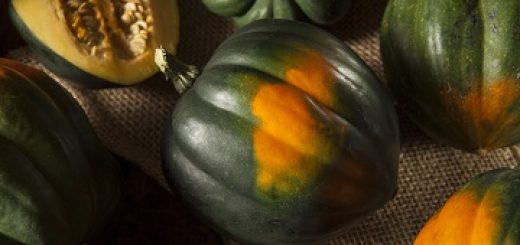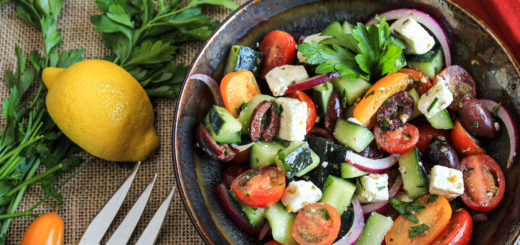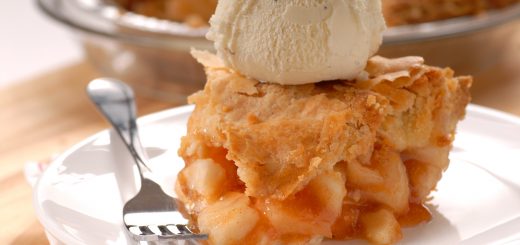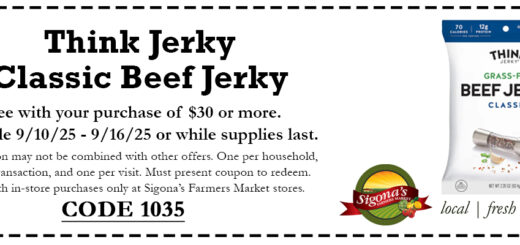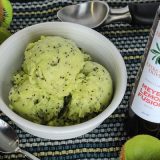In the Store with Sigona’s Featuring: Pumpkins and Squashes
Pumpkins and Squashes
Diane Rezendes, Food writer
With the Half Moon Bay pumpkin festival wrapped up and Hallowe’en just over a week away, we’ve got pumpkins on our mind – and on our open-air market shelves.
Most of our pumpkins and gourds come from family farms such as Spina Farms near Morgan Hill. We’ve worked with the Spina family for three generations, and we always look forward to this time of year when our store displays overflow with their bounty.
Pies and lattes and… Twinkies?
Pumpkin remains one of the hottest seasonal flavor trends in the US, as it has for several years. The trend shows no sign of abating. In fact, the list of products that feature pumpkin only continues to grow: a recent report by the Nielsen Company finds that in addition to lattes, pies, and cakes, pumpkin – and the spices we associate with it – are making their way into more unexpected products such as dog food, toothpaste, dish soap, and even a limited edition Pumpkin Twinkie.
While we will reserve judgment on some of these more esoteric offerings, we are unabashedly proud of the many varieties of fresh pumpkins and gourds we carry – from the super-sweet sugar pumpkin that’s ideal for pie, to the rich green speckled swan gourdperfect on the front porch or mantel.
Edible pumpkins and squash make delicious dishes – from pies and breads to soups and curries. Naturally low in fat and calories, pumpkin is a good source of fiber, which helps keep you satiated longer after eating. Its orange color comes from beta-carotene that converts to Vitamin A in the body, which may decrease inflammation, as well has help protect against cancer and heart disease.
In the eye of the beholder
Among our decorative squashes, we’ve noticed that at Hallowe’en, the uglier the pumpkin or gourd, the better it sells!
It wasn’t always this way.
Bumps, warts and discoloration are dominant traits in pumpkins, squashes and gourds: left on their own, these knobby features appear naturally. Growers used to work long and hard to develop varieties that would produce the perfectly round, smooth, orange pumpkin consumers demanded.
But in recent years, growers have re-introduced the knobby and ugly varieties.
Take the bumpy, orange-and-white striped One Too Many pumpkin. There was a time when decorators would have passed over this squash because of its odd shape, bumpy skin and inconsistent coloring. Yet today, those are the features that people seek out: the One Too Many is one of the more popular decorative squashes we carry.
We hope you’ll come away with ideas for unique decorative items, as well as new recipes for the many local pumpkins and squashes now in season. We look forward to seeing you here!
Here is our guide to the pumpkins and other squashes we have in the store.
- The classic. Developed at the University of Massachusetts. Pear-shaped with a pale creamy orange skin. Bright orange flesh. This is the sweetest variety.
- Buttercup, Round with a dark green rind and firm, dense orange flesh, with a sweet creamy flavor. Its firm texture will stand up to curries.
- A cross between acorn squash and sweet dumpling squash, its color is variegated orange and green fall colors. Its flavor is mild and buttery.
- Danish, or acorn squash. Small and deep green with a warm yellow-orange flesh, this is perfect to stuff and roast.
- Spaghetti squash. Yellow-to-cream skin, bright yellow flesh which, when cooked, resembles spaghetti. Very mild flavor, not sweet. A go-to substitution by cooks who are avoiding wheat or want to eat lower glycemic-index foods.
- Kabocha. Squat and round. Dark green skin and bright yellow-orange flesh. A nice, nutty flavor sort of between sweet potato and pumpkin.
- Sweet dumpling. Less than a pound and about the size of a large apple with sweet flesh. Because of its small size and thick skin, it can be difficult to peel – so it’s usually baked in the skin, stuffed with meat, cheese, grains, or vegetables and nuts.
- A large, elongated squash with smooth orange, pink or blue skin and firm, brilliant orange flesh. Its flavor is rich, sweet, and earthy.
- Cream-to-yellow skin, light orange flesh and a mild flavor. The skin on this variety is thin and therefore edible.
- Cinderella. Large with a deep orange color. If fairy godmothers did exist, the Cinderella squash would be the one we’d want turned into a coach to take us to the royal ball. Though edible, more often used for decoration.
- The Crown of Thorns. Small, very colorful gourd used mostly for decorating, but it is edible. Some say the spikes look like the fingertips of someone holding it in their hand.
- Howden The original jack-o-lantern, developed in the early 1970s by Massachusetts farmer John Howden. We’ve got the original large variety: its large stem and thick walls hold up well when carved, and its solid flesh is good for pie.
- The Ironman. Round, about 6” in diameter) round pumpkin with a smooth surface, which makes them nice for painting.
- Jarradale. An heirloom variety with a washed-out blue-green pallor that makes a ghostly addition to your Hallowe’en décor. Its deep orange flesh is soft with a sweet aroma and a pleasant flavor. Its very thick skin means it will store quite well.
- The Long Island Cheese. Resembles a wheel of cheese. It has a slightly sweet deep orange flesh. The seeds of the Long Island are said to have originated in Long Island, New York. Its flavor is similar to butternut, and makes a good pie.
- The One Too Many (a.k.a. the Bloodshot Eyeball). An orange-and-cream striped pumpkin that comes in many different shapes in sizes: some are oblong, some are round. This variety also makes tasty pies.
- The giant Prizewinner. So named because of its colossal size. This orange pumpkin has a glossy sheen and a true jack-o-lantern pumpkin shape. They’re great for carving and eating.
- The Red Kuri. Small, teardrop-shaped squash. A nutty flavor some say is reminiscent of chestnut. Also known as Hubbard, Hokkaido, or uchiki kuri squash.
- The Sugar Pie. The classic pumpkin pie pumpkin. It has a rich pumpkin flavor and one pumpkin is usually the perfect size for a single pie. Sugar Pie pumpkin is one of the meatiest with a small seed cavity and thick walls.
- The Turban squash. Great for fall decorating and delicious to eat. Bumpy skin, bulbous crown-like top and festive coloring. The wider part of the squash makes a natural tureen to serve this recipe for Turban squash soup.
- White pumpkin. A good substitute for orange pumpkin in any recipe. The flesh is light golden and it has large seeds that are perfect for toasting. It has a thick flesh that has a good texture for baking.
Decorative
- Speckled Swan Gourds. The long neck (or stem) of the gourd grows up from the base and curves downward, resembling a swan’s head. This gourd is a dark green speckled with cream-colored spots.
- Our mini pumpkins from Morgan Hill and Half Moon Bay are just cute to look at, don’t you think? They’re good for decorating as is and are also fun to paint around Halloween.
- Decorative Gourds are usually miniature versions of edible sized pumpkins and squash. They’re bumpy, but they are very popular decorative pieces.
- We also have small Jack O ‘Lanterns from a farm in Manteca. They’re perfect round shape and orange color makes them good carvers for children.
We’re pretty sure you’ll love the explosion of varieties and color here at Sigona’s as much as we do!

